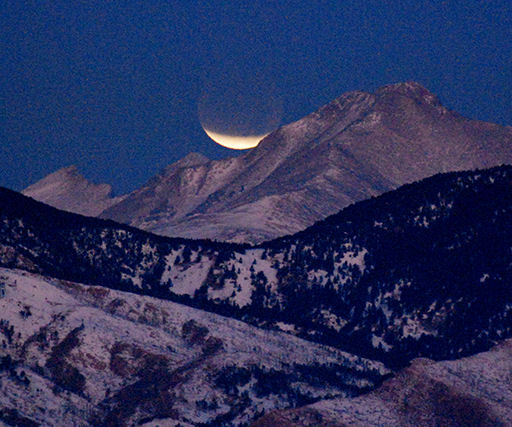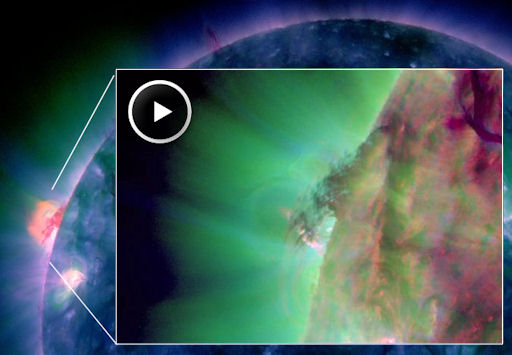They came from outer space--and you can have one! Genuine meteorites are now on sale in the Space Weather Store. |
TOTAL
LUNAR ECLIPSE: Today, Dec. 10th,
the full Moon passed through the shadow of Earth,
producing a total lunar eclipse visible across the
Pacific hemisphere. Don Oberbeck sends this picture
of the partially-eclipsed Moon setting behind the
Rocky Mountains near Boulder, CO:
"The Moon set behind Long's Peak
at 6:49 am MST moments before totality," says
Oberbeck.
During the total phase of the eclipse,
the Moon turned a beautiful shade of copper-red.
Browse the links for more images:
from
Thad V'Soske of Western Colorado; from
Peter Lipscomb of Santa Fe, NM; from
Sergio Castillo of Inglewood, California; from
Christopher Handler of Adelaide, Australia;
from
Peter Lipscomb of Santa Fe, NM; from
Pete Strasser of Kailua Kona, HI; from
Steven Janowiecki of Bloomington, Indiana; from
Doug Schmutz of Hamblin Valley, Utah; from
Paul Schneider of Tucson, Arizona; from
Joseph Shaw of Bozeman, Montana, USA ; from
Jerry Zhu of Middleton, Wisconsin; from
Gururaj of Mysore, Karnataka, India;
...AND
A TOTALLY DIFFERENT ECLIPSE: On
Dec. 8th, NASA's Solar Dynamics Observatory (SDO)
observed an unusual event on the sun: An erupting
cloud of plasma was eclipsed by a dark magnetic
filament. Play the movie for a visual explanation:
The source of the explosion is a farside
active region due to turn toward Earth in a few
days. For now, though, the blast site lies just
behind the sun's eastern limb--perfectly situated
for this rare kind of eclipse. Note the filament
of relatively cool dark material snaking across
the sun's surface in the foreground. That filament
partially blocks our view of hot plasma exploding
behind it. By studying how the light of the explosion
is filtered by the foreground material, SDO mission
scientists might be able to learn something new
about dark filaments on the sun.
http://spaceweather.com





No hay comentarios:
Publicar un comentario